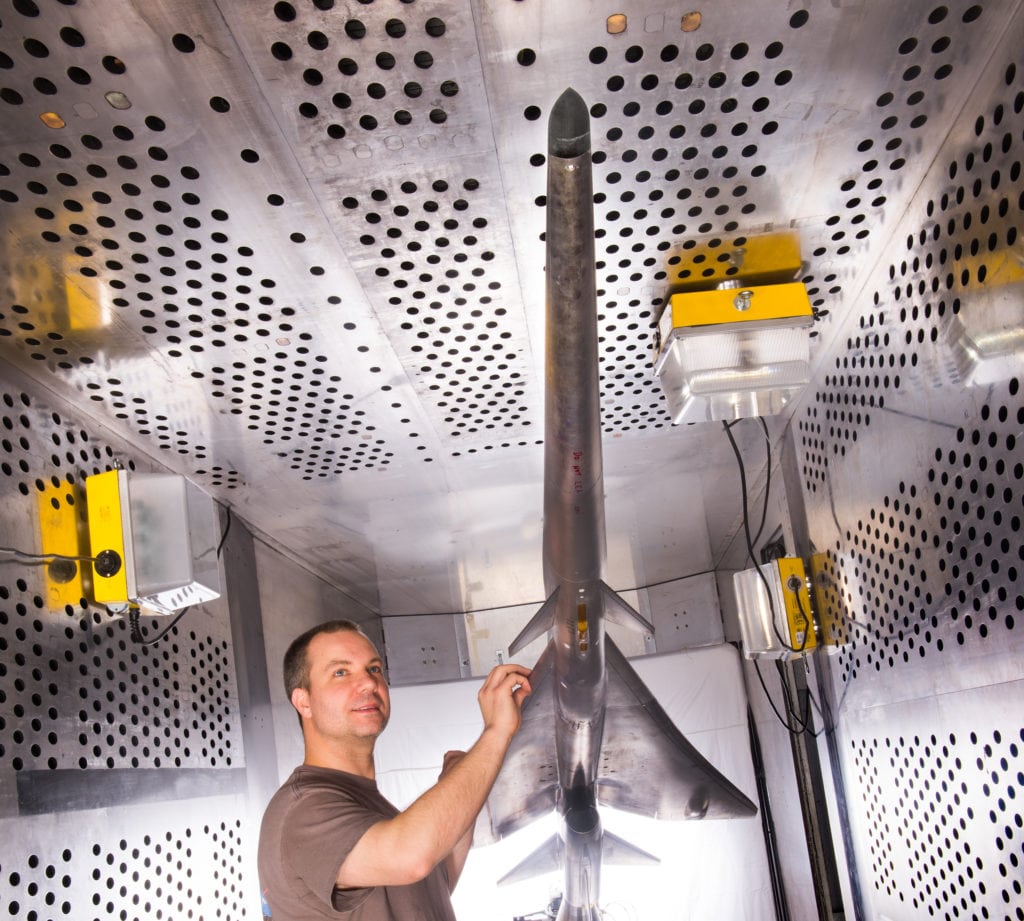
Mechanical technician Dan Pitts prepares a nine percent scale model of Lockheed Martin’s Quiet Supersonic Technology (QueSST) X-plane preliminary design for its first high-speed wind tunnel tests at NASA’s Glenn Research Center in Cleveland. Photo courtesy of NASA
To have the luxury of flying in a supersonic passenger jet would seem a thing of airport daydreams. But now that NASA and Lockheed Martin have started wind-tunnel testing the X-plane design, there’s reason to entertain the daydream as a possible reality.
Lockheed Martin won the NASA contract in February 2016 for the preliminary design of a Quiet Supersonic Technology (QueSST) X-plane flight demonstrator. NASA said last week that a 9% scale model of it is now starting eight weeks of wind-tunnel testing at Glenn Research Center in Cleveland, Ohio. The Supersonic Wind Tunnel is 8-by-6 feet, and the model is set to experience wind speeds ranging from Mach 0.3 to Mach 1.6.
“We’ll be measuring the lift, drag and side forces on the model at different angles of attack to verify that it performs as expected,” says aerospace engineer Ray Castner, who leads propulsion testing for NASA’s QueSST effort. “We also want to make sure the air flows smoothly into the engine under all operating conditions.”
The key to this design is quietness. According to NASA, research shows that it is possible for a supersonic airplane to be shaped so that shockwaves that form from flying that fast can generate at ground level a sound that is so quiet that the public would notice very little sound, if any. The shocks and expansions associated with supersonic flight would be separated. Instead of a sonic “boom,” Peter Iosifidis, QueSST program manager at Lockheed Martin Skunk Works, says it would be more like a “heartbeat.”
The QueSST design is just one of a series of X-planes that are part of NASA’s New Aviation Horizons (NAH) initiative. NASA hopes to reduce fuel use, emissions and noise through designs that are different from the traditional aircraft shape. The resulting low-boom flight demonstrator would start test flights around 2020, with other X-planes following.